Content
Published:
This is an archived release.
30 per cent of votes cast in advance in the Storting election
The total number of votes cast in advance increased, and constitutes 30.2 per cent of all valid votes. The electoral turnout at this year’s Storting election was 78.2 per cent, which corresponds to a total of 2 848 100 valid votes. Compared to the election four years ago, this was an increase of 1.8 percentage points.
| 2013 | |
|---|---|
| Vaid votes | |
| Valid votes | 2 836 029 |
| At polling station | 1 980 774 |
| In advance | 855 255 |
| Rejected votes | 3 255 |
| At polling station | 1 630 |
| In advance | 1 625 |
| Blank votes | 12 874 |
| At polling station | 9 173 |
| In advance | 3 701 |
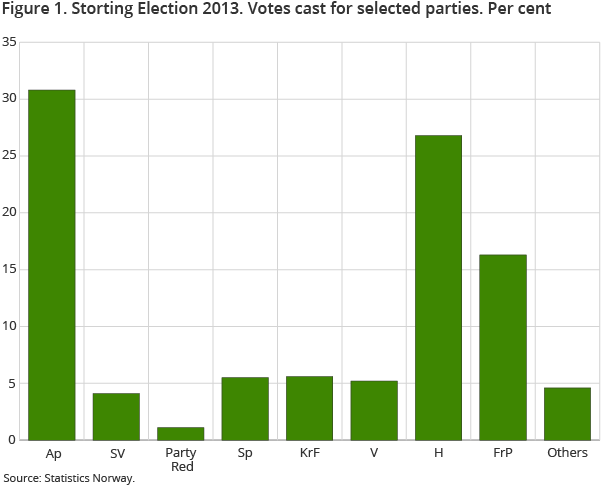
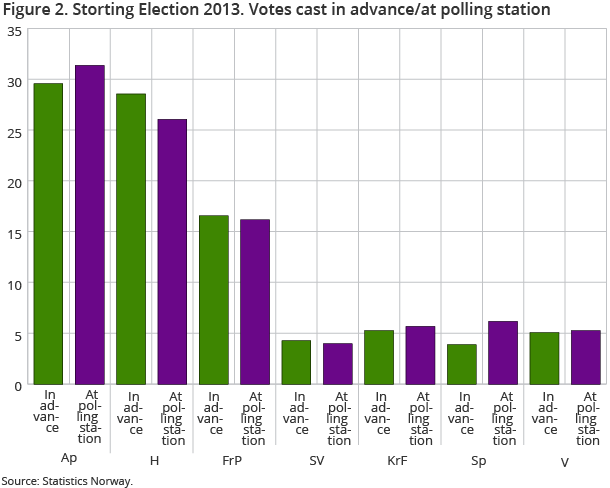
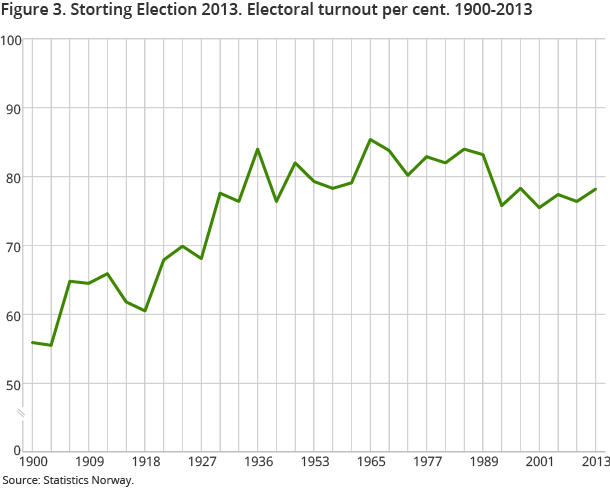
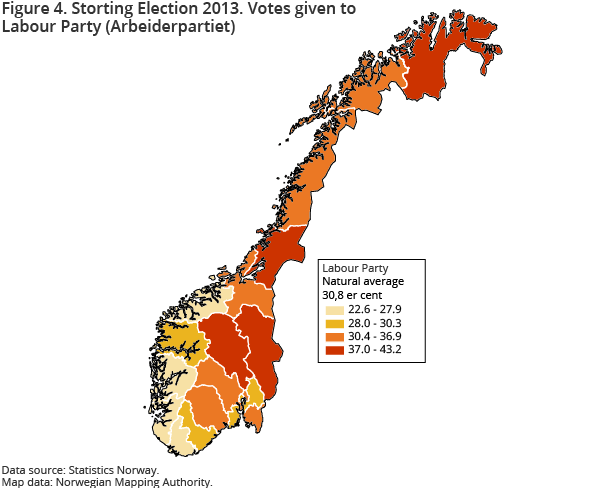
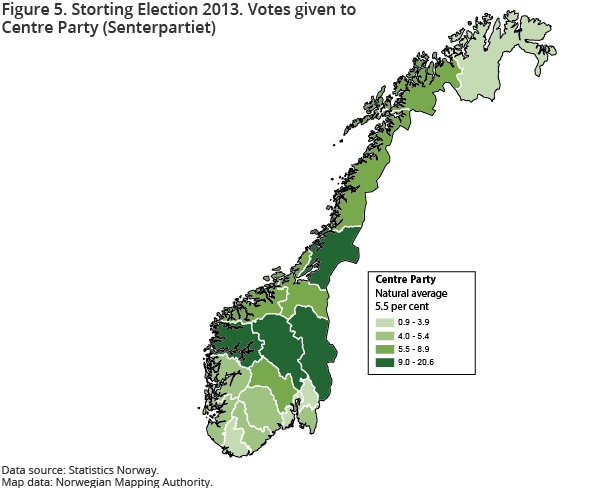
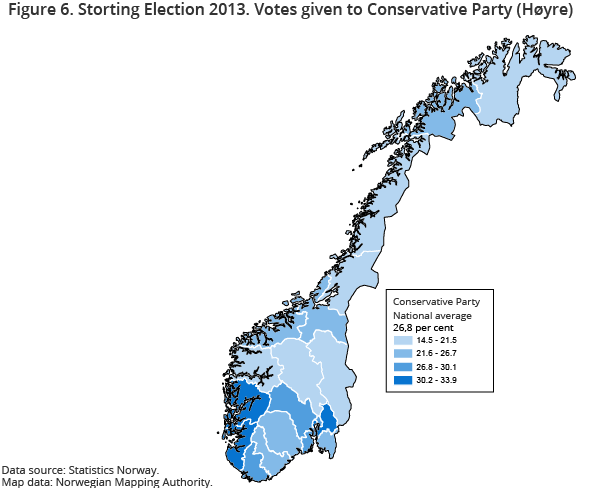
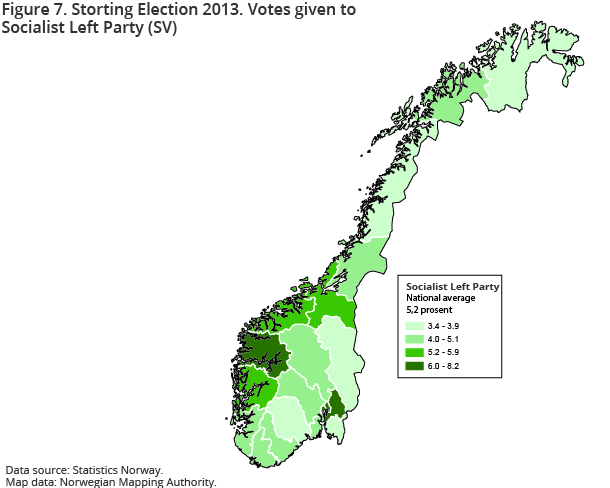
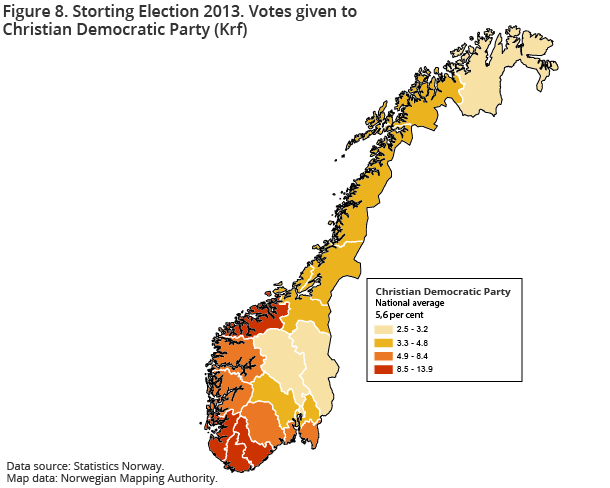
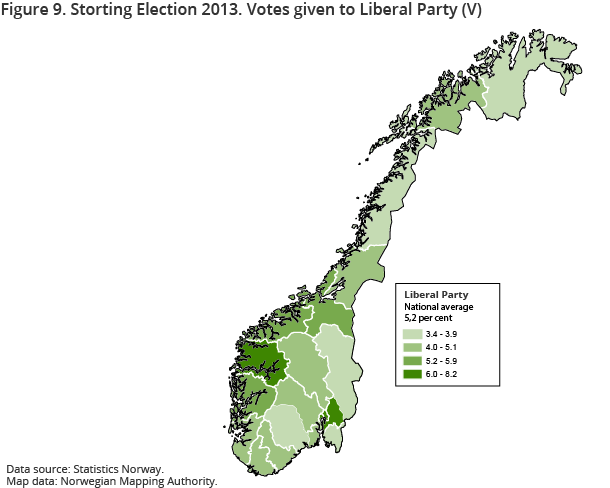
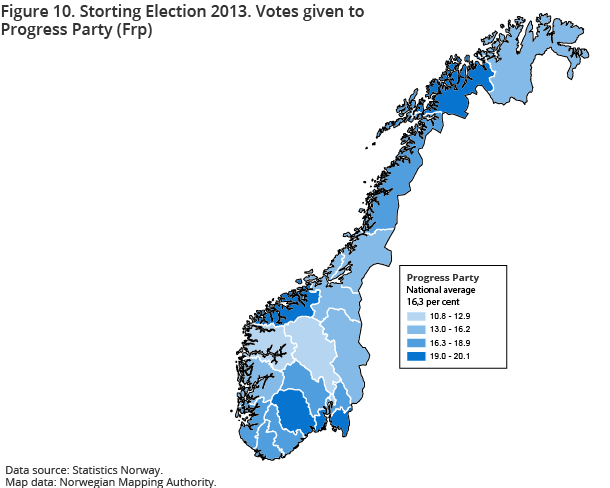
Of valid votes, 30.2 per cent were cast in advance, which is 5.8 percentage points higher than in the election in 2009. Compared to the 2005 election, the increase in votes cast in advance is 12.3 percentage points. The highest number of votes cast in advance was in Bodø municipality in Nordland, where 55.5 per cent of the total number of valid votes were cast in advance. Twelve out of the 21 municipalities that recorded the highest number of votes cast in advance in this Storting election took part in a government project where voters could vote over the internet.
More municipalities with high electoral turnout
The electoral turnout this year is higher and on a more normal level for the years after 1989. In the period from 1965-1989, the electoral turnout was over 80 per cent. Utsira municipality in Rogaland with 157 persons entitled to vote recorded the highest voter turnout with 91.1 per cent, followed by Fedje in Hordaland with 89.3 and Kvitsøy in Rogaland with 87.2 per cent. A total of 89 municipalities recorded a voter turnout that exceeded 80 per cent – while the figure was 44 in 2009.
The lowest voter turnout was recorded in Moskenes municipality in Nordland with 65.1 per cent, followed by Kautokeino and Måsøy in Finnmark with 66.4 and 66.6 per cent voter turnout respectively. In total, 15 municipalities recorded a voter turnout below 70 per cent, and among these, 13 belong to the three northernmost counties.
Geographically varied voter turnout
Compared to the election in 2009, all counties experienced an increase in voter turnout. As in earlier elections, the highest turnout was recorded in Akershus County and the lowest in Finnmark County. This year the figures were 81.7 and 71.3 per cent respectively. The largest increase was recorded in Sogn og Fjordane and Sør-Trøndelag, with.2.9 and 2.8 percentage points.
Female representation exactly the same as before
A total of 67 females were elected to the Storting in this election. This is exactly the same number as in 2009. Forty per cent of the representatives are female. This was the highest portion of female representation ever seen and still is. The Centre Party has the highest portion, with 7 out of 10 representatives being female. The Labour Party has 51 per cent female representation. The Progress Party still has the lowest portion of female representatives with 21 per cent, which is 3 percentage points lower than in 2009.
Contact
-
Tove Bergseteren
E-mail: tove.bergseteren@ssb.no
tel.: (+47) 99 79 08 19
-
Statistics Norway's Information Centre
E-mail: informasjon@ssb.no
tel.: (+47) 21 09 46 42
